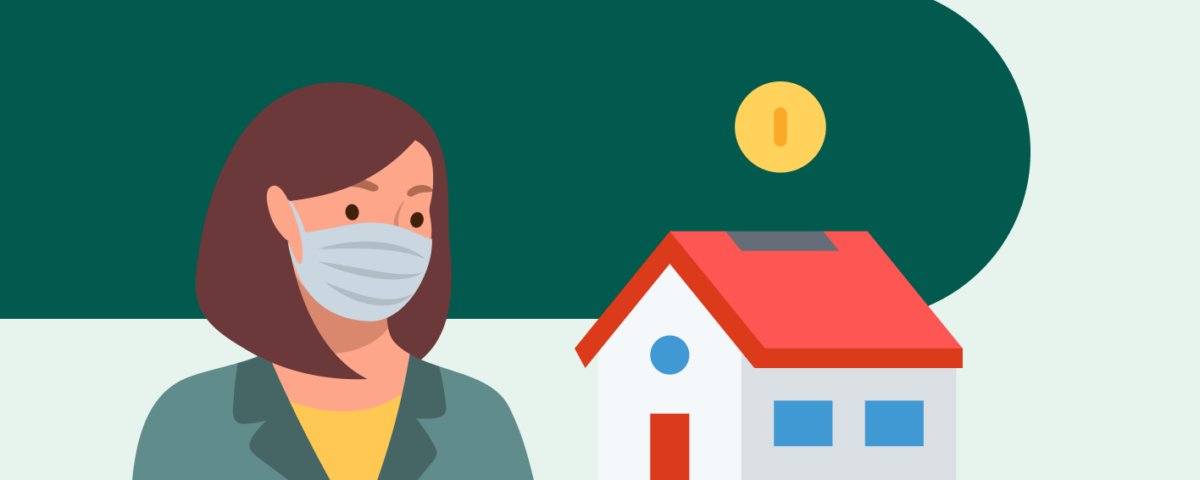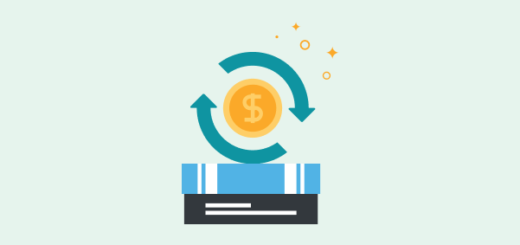Can’t Pay Mortgage Due to COVID? Here are Some Options
Our goal is to give you the tools and confidence you need to improve your finances. Although we receive compensation from our partner lenders, whom we will always identify, all opinions are our own. Credible Operations, Inc. NMLS # 1681276, is referred to here as “Credible.”
Many people are struggling to pay their bills due to the COVID-19 pandemic. But thankfully, as a homeowner, there are several options you can use to request financial relief and avoid foreclosure.
Lenders are willing to help you through these uncertain times, but you should contact them as soon as you fear you might not be able to make your mortgage payment.
Here are some of the ways you can get help paying housing costs during an economic hardship:
Check your mortgage type
Your COVID-19 mortgage relief options depend on the type of mortgage that you have. The most common mortgage types include:
These loans generally have the most assistance options if you’re behind on mortgage payments.
If you have a conforming conventional loan, Fannie Mae and Freddie Mac offer several mortgage relief options to qualified homeowners impacted by the coronavirus, including a forbearance plan and loan modification.
Non-conforming loans, like jumbo loans and government-backed loans, may have fewer financial protections since Fannie Mae and Freddie Mac don’t secure these loans. If you have one of the loans, contact your loan servicer to review your assistance options.
Forbearance
When your loan servicer approves mortgage forbearance, you have permission to stop making monthly payments or reduce your monthly payment temporarily. However, mortgage forbearance doesn’t cancel out the payments — you’ll still need to repay the deferred principal and interest once forbearance ends.
COVID-19 mortgage forbearance extension: The deadline to request COVID-19 mortgage forbearance has been extended several times. It was most recently set to expire for eligible loans on Sept. 30, 2021.
However, you can now request up to six months of initial forbearance until the end of the nationally declared emergency for FHA, USDA, and VA loans. You may also request an additional six months of forbearance if the pandemic hasn’t ended by the time your initial forbearance expires.
If you requested forbearance between Jul 1, 2021 and Sept. 30, 2021, you’re eligible to request an additional six months of forbearance as well.
Home loans owned by Freddie Mac and Fannie Mae also have an open-ended request window.
Most lenders only issue an initial forbearance period of six months. Then, if you need extra help, you can request a forbearance extension in three or six-month increments until you’re in forbearance for 12 months.
When forbearance ends, you’ll need to repay the amount you deferred. Your repayment options may include:
- Reinstatement: This is when you pay the entire deferral amount back all at once. Lenders cannot require this repayment option when claiming a coronavirus hardship thanks to the CARES Act but can for traditional forbearance requests.
- Repayment plan: You might be able to bring your mortgage current by entering a repayment plan and making additional monthly payments for 12 months after forbearance. Once your mortgage is current again, your monthly payment will return to its normal amount.
- Defer payments until the end of the loan: Another option is delaying the forbearance payments and paying them back at the end of the mortgage. While you stay in debt longer, you’ll have more time to pay it back and your monthly payment won’t increase.
CARES Act
The CARES Act passage in March 2020 provided several financial assistance programs for individuals. For example, this legislation paved the way for the first stimulus checks.
There are several coronavirus-related mortgage assistance benefits too:
- Mortgage forbearance: It’s easier for homeowners to qualify for forbearance for up to 12 months. There currently isn’t an application deadline for conventional or government-backed mortgages.
- Foreclosure moratorium: Lenders were prohibited from starting the home foreclosure process until after July 31, 2021. While this moratorium expired, most mortgage servicers will not initiate foreclosure until Jan. 1, 2022, or later.
- Eviction moratorium: The federal eviction moratorium expired on Aug. 26, 2021, after a Supreme Court ruling. Landlords must provide a 30-day eviction notice to tenants.
Currently, only the mortgage forbearance benefit remains active for most homeowners.
Emergency rental assistance
Many states and cities offer emergency rental assistance programs. These programs can help you pay rent or cover utility payments.
You can search for local programs from the Consumer Financial Protection Bureau.
If you own rental property, many programs also accept landlord applications. Being able to collect up to 18 months of unpaid rent can help pay your mortgage on investment properties.
Mortgage modification
You may prefer asking your lender to modify your existing loan if you want to continue making payments and avoid the refinancing process.
A loan modification permanently adjusts your mortgage terms. The main benefits of a loan modification include:
- Lower monthly payment: Your lender can reduce your monthly payment (while keeping your interest rate the same) by extending your loan term. You’ll pay more in interest over the long term with this option, but it can give you more breathing room in your monthly budget.
- Reduced interest rate: Your lender may offer a new interest rate if it’s lower than your current rate. This can significantly reduce your monthly payment.
- Switch to a fixed interest rate: Your lender may recommend switching from an adjustable-rate mortgage to a fixed-rate mortgage so you have a stable monthly payment for the life of your loan.
Loan assistance
Your state may also offer financial assistance for homeowners, and you might be able to qualify for these programs even if your mortgage is already in forbearance.
Many states receive funds from the U.S. Department of the Treasury’s Hardest Hit Fund to help you when you can’t pay the mortgage due to COVID-19. Oregon, for example, offers a five-year forgivable loan with its COVID-19 Mortgage Relief program. If you’re currently receiving unemployment benefits, your funds may help keep your home loan current and cover up to six additional payments.
Certain local cities also offer mortgage assistance programs. For instance, City of Chicago homeowners with a low or moderate income may receive up to $3,300 in aid.
Talk to a housing counselor
If you can’t keep up with your mortgage payments and are facing foreclosure, consider speaking with a HUD-approved housing counselor.
This service is often provided for free, and the counselor can help review your repayment options to avoid foreclosure. To find a foreclosure avoidance counselor, use this search tool from the U.S. Department of Housing and Urban Development.
You can also contact your mortgage servicer to review your personalized choices too.
Refinance your mortgage
A mortgage refinance may not be the most practical option when you can’t pay your mortgage due to COVID. Mortgage forbearance and other assistance programs may provide immediate assistance and you won’t have to worry about paying hefty closing costs.
However, refinancing is an option to consider after your pandemic forbearance period ends and you want to change the terms of your mortgage. To do this, your loan will need to be current and your lender may have a minimum waiting period if you’re just exiting forbearance or another assistance program.
Depending on your situation, you could have to wait at least 12 months. However, it can be easier to waive this requirement when you claim COVID-19 hardship.
If you think refinancing is the right move, Credible makes the process easy. You can compare multiple lenders and see prequalified refinance rates in as little as three minutes without leaving our site.
Find My Refi Rate
Checking rates will not affect your credit




